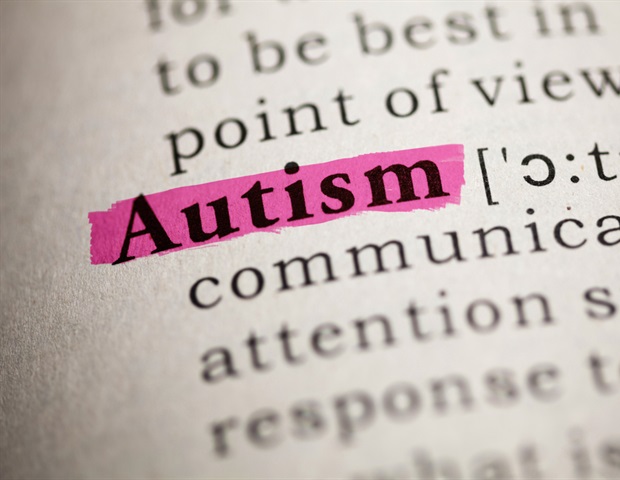Babies are fascinating creatures that bring joy and wonder to those around them. One of the many milestones that parents eagerly anticipate is when their baby recognizes themselves in the mirror. According to research, this typically occurs between the ages of 18 months and 2 years.
During the first few months of a baby’s life, they are unable to distinguish themselves from their surroundings. However, as they grow and develop, they become more aware of their body and begin to recognize their own reflection. This is an important step in a baby’s cognitive development as it helps them understand their place in the world and develop a sense of self.
Understanding when babies recognize themselves in the mirror is important for parents and caregivers as it can help them create stimulating environments that promote healthy development. By providing opportunities for babies to interact with mirrors and their own reflection, parents can support their child’s cognitive and emotional growth.
Understanding Baby Development

Babies go through many developmental milestones during their first few years of life. Understanding these milestones can help parents and caregivers provide the best possible care for their infants and toddlers. One important milestone is when babies recognize themselves in the mirror.
This milestone is a sign of self-awareness and typically occurs between 18 months and 2 years of age. Before this age, babies may look in the mirror but not understand that they are seeing their own reflection.
Cognitive skills play a significant role in this developmental milestone. As babies grow and develop, they begin to understand the concept of object permanence and that objects still exist even when they are out of sight. This understanding helps babies recognize themselves in the mirror as a separate entity from their surroundings.
Tummy time is also crucial for baby development and can aid in the recognition of self in the mirror. During tummy time, babies strengthen their neck and back muscles, which can help them lift their head and focus on their reflection.
It is essential to note that every baby develops at their own pace, and it is normal for some babies to recognize themselves in the mirror earlier or later than others. Parents and caregivers can encourage this milestone by providing a safe and stimulating environment for their infants and toddlers to explore and learn.
In conclusion, understanding baby development is crucial for providing the best possible care for infants and toddlers. Recognizing oneself in the mirror is an important milestone that typically occurs between 18 months and 2 years of age and is influenced by cognitive skills and tummy time.
The Concept of Self-Recognition
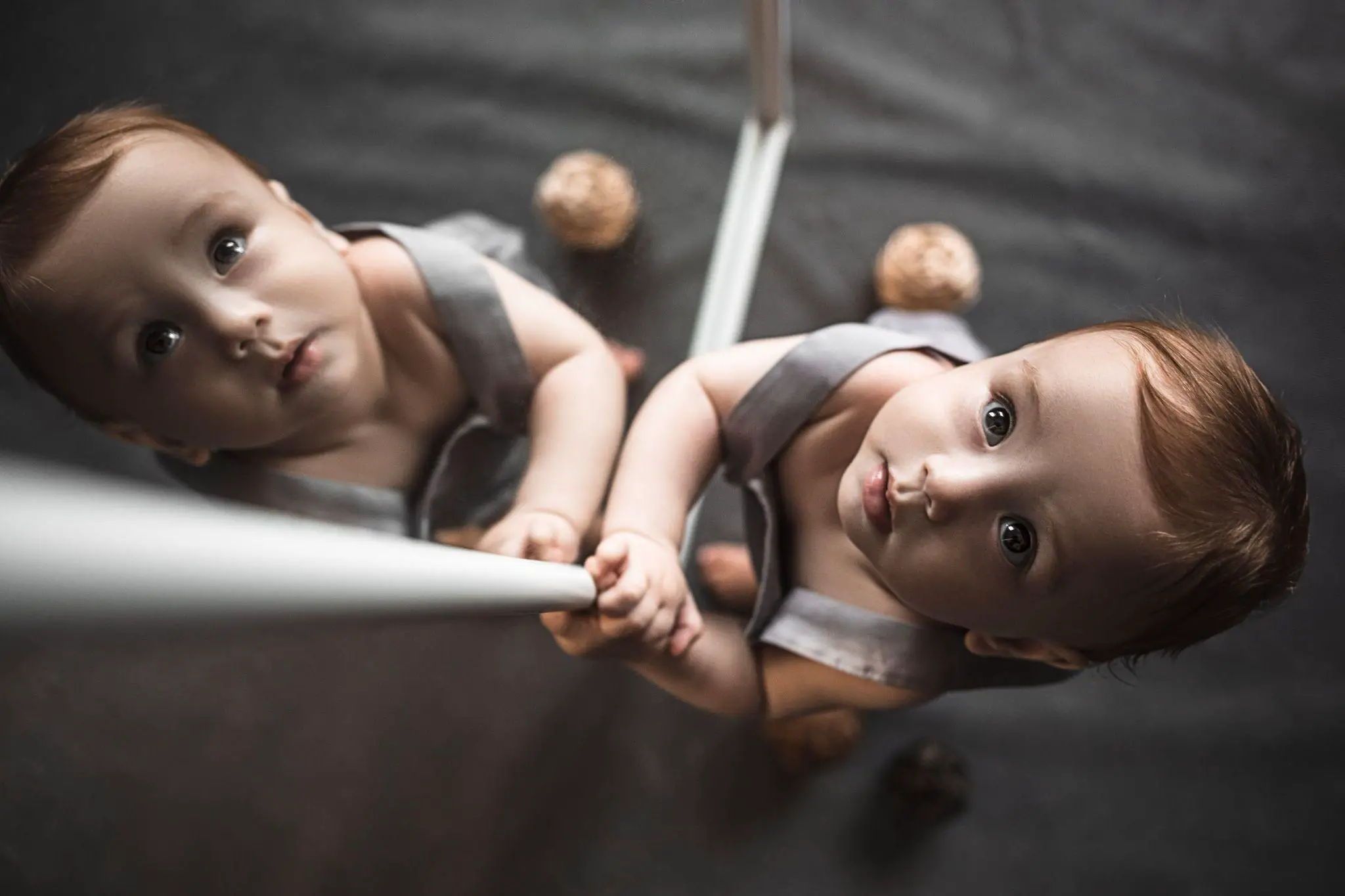
Self-recognition is the ability to recognize oneself as a distinct entity separate from the surrounding environment. It is a crucial developmental milestone that usually occurs between 15 and 24 months of age. The ability to recognize oneself in a mirror is considered a sign of self-recognition, and it is often used as a measure of self-awareness.
Self-recognition is closely related to the development of the ego, which is the sense of self that develops through social interactions and experiences. The ego is responsible for maintaining a sense of continuity and coherence in one’s experiences and memories, and it plays a crucial role in shaping one’s personality and behavior.
The development of self-recognition and the ego is closely linked to the development of consciousness, which is the ability to be aware of one’s own thoughts, emotions, and sensations. Consciousness is a complex and multifaceted phenomenon that involves many different cognitive and neural processes, and it is still not fully understood.
Research has shown that self-recognition and the development of the ego are influenced by many different factors, including genetics, early experiences, and social interactions. For example, children who receive more positive and responsive interactions from their caregivers are more likely to develop a strong sense of self and a positive self-image.
In conclusion, self-recognition is a crucial milestone in the development of the ego and the sense of self. It is closely related to the development of consciousness and is influenced by many different factors. The ability to recognize oneself in a mirror is a sign of self-awareness and is often used as a measure of self-recognition in infants and young children.
Mirror Recognition in Babies
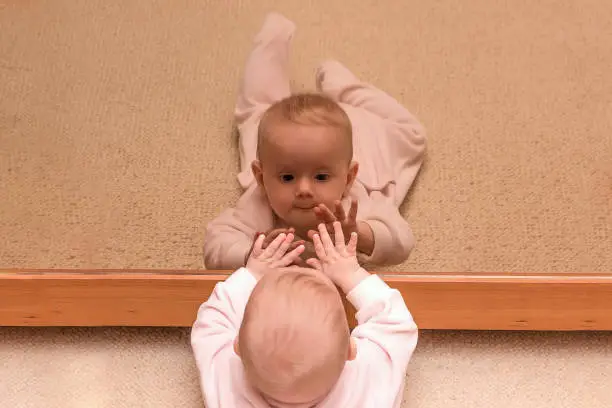
Mirror recognition is a significant milestone in a baby’s development of self-awareness. According to research, babies typically start recognizing themselves in the mirror between 6 to 18 months of age. One of the most common ways to test mirror recognition in babies is the “rouge test.”
The rouge test involves putting a bit of lipstick or rouge on the baby’s nose and then placing them in front of a mirror. If the baby touches or tries to wipe off the mark on their nose, it indicates that they recognize themselves in the mirror.
It is important for most parents to note that the concept of mirrors can be tricky for babies to grasp, and even though they may recognize themselves in the mirror, they may not understand the concept of reflection.
Babies also start recognizing familiar faces and objects from a distance between 2 to 4 months of age. By the 4-month mark, they can recognize their primary caregivers’ faces.
Mirror recognition is a crucial step in a baby’s development of self-awareness and understanding that they are a separate individual. It is essential for parents and caregivers to provide babies with opportunities to explore their reflection in a safe and supportive environment.
In summary, mirror recognition is a developmental milestone that typically occurs between 6 to 18 months of age. The rouge test is a common method used to test mirror recognition in babies. Babies also start recognizing familiar faces and objects from a distance between 2 to 4 months of age. Mirror recognition is a crucial step in a baby’s development of self-awareness and understanding of their individuality.
Language and Recognition
Babies who recognize themselves in the mirror are also likely to start developing language skills around the same time. According to a study, infants who were able to recognize themselves in the mirror at 9 months old had better language skills at 14 months old than those who did not recognize themselves.
This connection between self-recognition and language development is not entirely clear, but it is believed that the ability of a new baby to recognize oneself in the mirror is a sign of self-awareness, which is important for language development. Self-awareness allows babies to understand that they are separate individuals from their surroundings and that they have their own thoughts and feelings.
As babies develop their language skills, they become more adept at recognizing themselves and others in the mirror. They may start to point to themselves and say their own name or point to others and say their names as well. This is an important step in social development and helps babies to connect with others.
Videos can also be a useful tool for babies to recognize themselves in the mirror. Parents can record their baby’s interactions with the mirror and play them back to them. This can help babies to understand that the reflection in the mirror is actually themselves and not another baby.
Overall, the connection between self-recognition and language development is an important one. As babies become more self-aware, they also become more adept at recognizing themselves and others in the mirror, which is an important step in social development and language acquisition.
The Role of Play in Recognition
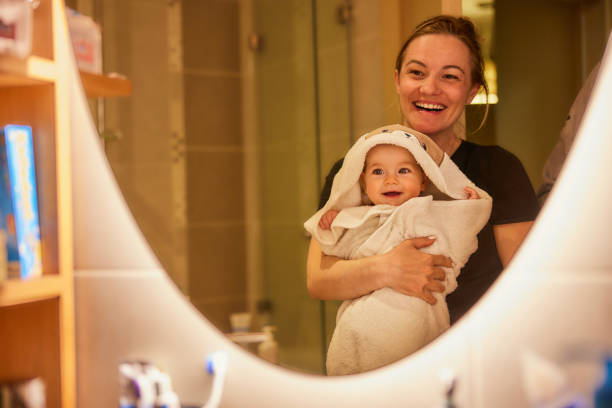
Play is an essential part of a baby’s development, and it plays a crucial role in helping them recognize themselves in the mirror. Babies learn through play, and mirror play is an excellent way to help them develop a sense of self-awareness.
Mirror play involves placing a baby in front of a mirror and allowing them to explore their reflection. They may make faces, reach out to touch the mirror, or move their body to see different angles. Through this play, babies begin to understand that the reflection they see is their own.
Movements are also an essential part of mirror play. As babies move their body, they see their reflection moving in the mirror. This helps them understand that the reflection is a representation of their own body. They begin to recognize that the movements they make are reflected in the mirror.
Mirror play can be made more engaging by using toys or props. For example, parents can hold a toy in front of the mirror and encourage their baby to reach for it. This helps babies understand that the reflection they see is not a separate object but a representation of themselves.
In conclusion, play is an essential tool in helping babies recognize themselves in the mirror. Through mirror play, babies can develop a sense of self-awareness and understand that the reflection they see is their own. Movements and props can make mirror play more engaging and help babies learn more effectively.
Emotional Development and Self-Awareness
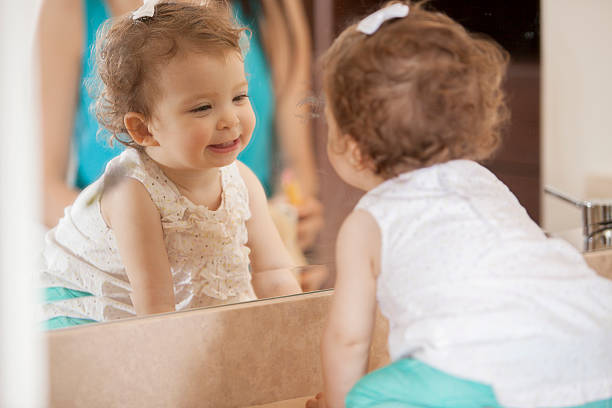
Babies’ emotional development and self-awareness are intertwined with their ability to recognize themselves in the mirror. According to developmental studies, babies begin to show new emotions and develop self-awareness between the ages of one and five. Philippe Rochat, Ph.D. of Emory University describes this process as the Five Stages of Self-Awareness.
Self-awareness is an essential aspect of emotional development, as it allows babies to understand themselves as separate individuals from others. This understanding helps them develop empathy and recognize the emotions of others. Through self-awareness, babies learn to regulate their own actions and emotions, which is a crucial aspect of social and emotional development.
Embarrassment is another emotion that is linked to child development and self-awareness. Babies start to experience embarrassment when they realize that they have done something wrong or inappropriate. This realization is possible only when they have a sense of self-awareness.
Babies’ thoughts and feelings are also connected to their self-awareness. As they develop self-awareness, they start to understand their thoughts and feelings better. This understanding helps them communicate their needs and emotions to others, which is essential for building relationships.
In conclusion, emotional development and self-awareness are closely linked, and babies’ ability to recognize themselves in the mirror is an essential aspect of this development. Through self-awareness, babies learn to understand themselves as separate individuals from others, regulate their emotions, and develop empathy.
Comparative Analysis: Babies and Animals
Many animals have been observed to recognize themselves in mirrors, including dolphins, great apes, chimpanzees, and elephants. This ability is tested using the mirror test, which involves placing a mark on the animal’s body that can only be seen in a mirror. If the animal tries to touch or remove the mark, it is taken as evidence that it recognizes the reflection as its own.
While babies have also been tested using the mirror test, their ability to recognize themselves in mirrors develops differently than in animals. Babies typically begin to show signs of self-recognition at around 6 to 18 months of age, whereas many animals have shown self-recognition much earlier. For example, dolphins have shown self-recognition as early as 7 months of age.
One possible explanation for this difference is that animals rely more heavily on visual cues for survival than babies do. For example, dolphins need to recognize their own body position in order to swim and hunt effectively, whereas babies have adults to care for them and do not need to rely on their own body position as much.
Another factor that may contribute to differences in self-recognition abilities is brain development. The human brain undergoes significant changes during the first few years of life, which may play a role in the development of self-awareness. However, research on animal brains is still limited, so it is difficult to draw firm conclusions about the role of brain development in self-recognition.
Overall, while there are similarities between babies and animals in terms of self-recognition abilities, there are also important differences that reflect the unique developmental and evolutionary paths of each species.
Scientific Studies and Research
The recognition of oneself in the mirror is one of the key milestones in child development. It is a sign that the child has developed a sense of self-awareness and has begun to understand that they are a distinct individual separate from other people and objects in the environment. Over the years, researchers have conducted various studies to understand when babies recognize themselves in the mirror.
One of the most well-known tests used to determine self-recognition in babies is the “rouge test.” This test involves placing a small mark of rouge on the baby’s nose and then placing the baby in front of a mirror. If the baby recognizes themselves in the mirror, they will touch their nose or try to remove the mark of rouge. This test was first introduced by psychologist Gordon Gallup in the 1970s.
Several studies have been conducted using the rouge test to determine when babies recognize themselves in the mirror. One study conducted by Emory University found that babies as young as six months old can recognize themselves in the mirror. However, the study also found that babies at this age do not have a full understanding of self-representation or object permanence.
Another study conducted by researchers at the University of Paris found that babies who were exposed to photographs of themselves regularly were more likely to recognize themselves in the mirror at a younger age. This study suggests that exposure to photographs may help babies develop a better understanding of their own appearance and increase self-recognition.
In addition to the rouge test, researchers have used other methods to determine self-recognition in babies. One such method is the “level 1” and “level 2” tasks, which involve hiding a toy under a blanket and then revealing it in front of a mirror. Babies who recognize themselves in the mirror will reach for the toy under the blanket rather than the toy in the mirror.
Overall, these studies suggest that self-recognition in babies is a complex process that involves the development of a sense of self-representation and object permanence. Understanding when babies recognize themselves in the mirror can provide valuable insights into child psychology and the development of theory of mind.
Significance for Adults
Recognizing oneself in the mirror is not only important for babies but also for adults. It is a crucial aspect of self-awareness, which is a vital component of emotional and mental well-being. Here are some ways in which mirror recognition can be significant for adults:
Self-Reflection
Just like babies, adults can use mirrors for self-reflection. By looking at themselves, they can assess their physical appearance, posture, and body language. It can help them identify areas that need improvement and make necessary changes. Moreover, self-reflection can also help adults identify their emotions and thoughts, which can help them manage their mental health.
Body Language
Adults can use mirrors to improve their body language. By observing themselves, they can identify any awkward or uncomfortable postures and work on correcting them. It can help them appear more confident and assertive in social situations.
Muscles
Adults who engage in physical activities can use mirrors to monitor their muscle development. By observing themselves, they can identify any muscle imbalances and work on correcting them. It can help them improve their athletic performance and reduce the risk of injuries.
In conclusion, mirror recognition is not only important for babies but also for adults. It can help them improve their self-awareness, body language, and physical health. By using mirrors for self-reflection, adults can identify areas that need improvement and make necessary changes.
Conclusion
In summary, babies typically recognize themselves in the mirror at around 18 months of age. This is an important milestone in their development of self-awareness. Prior to this age, babies may not realize that the image in the mirror is a reflection of themselves, and may react as if they are seeing another baby.
Research suggests that the development of self-recognition in babies occurs in several stages, which may be influenced by factors such as social interaction and cognitive development. For example, babies may first show signs of self-awareness by looking at their own hands or feet, and later progress to recognizing their own reflection in the mirror.
While the ability to recognize oneself in the mirror may seem like a simple task, it is actually a complex cognitive process that involves multiple brain regions and neural pathways. Understanding how this process develops in babies can provide insights into the nature of self-awareness and the development of the human brain.
Parents and caregivers can encourage the development of self-awareness in babies by providing opportunities for social interaction and exploration. Playing with mirrors and other reflective surfaces can be a fun and engaging way for babies to explore their own bodies and develop a sense of self. However, it is important to remember that every baby develops at their own pace, and there is no need to be overly concerned if a baby does not show signs of self-recognition until later in their development.
Frequently Asked Questions
At what age do infants become able to recognize themselves in a mirror?
Infants usually become able to recognize themselves in a mirror at around 18 months of age. This is known as the “mirror stage” of development, which was first described by psychologist Jacques Lacan. During this stage, infants begin to develop a sense of self-awareness and start to recognize that the image in the mirror is their own reflection.
Do babies recognize themselves in videos?
No, babies do not recognize themselves in videos. This is because they are not yet able to understand that the image on the screen is a representation of themselves. However, babies may still enjoy watching videos of themselves or other babies.
Why do babies love looking in the mirror?
Babies love looking in the mirror because it provides them with visual stimulation and helps them develop their sense of self-awareness. They also enjoy seeing their own movements and facial expressions, which can be fascinating and entertaining for them.
At what age do babies become self-aware?
Babies become self-aware at around 18 months of age, which is when they begin to recognize themselves in the mirror. This is a crucial stage of development for kids, as it marks the beginning of their understanding of themselves as individuals.
Why don’t you let a baby look in the mirror?
It is not recommended to let babies look in the mirror for extended periods of time, as it can be overstimulating and potentially harmful to their developing sense of self-awareness. However, short periods of mirror play can be beneficial for their development.
Mirror play activities for babies
Mirror play activities can be a fun and engaging way to help babies develop their sense of self-awareness. Some examples of mirror play activities include making faces in the mirror, playing peek-a-boo with a mirror, and using a mirror to explore different textures and objects.
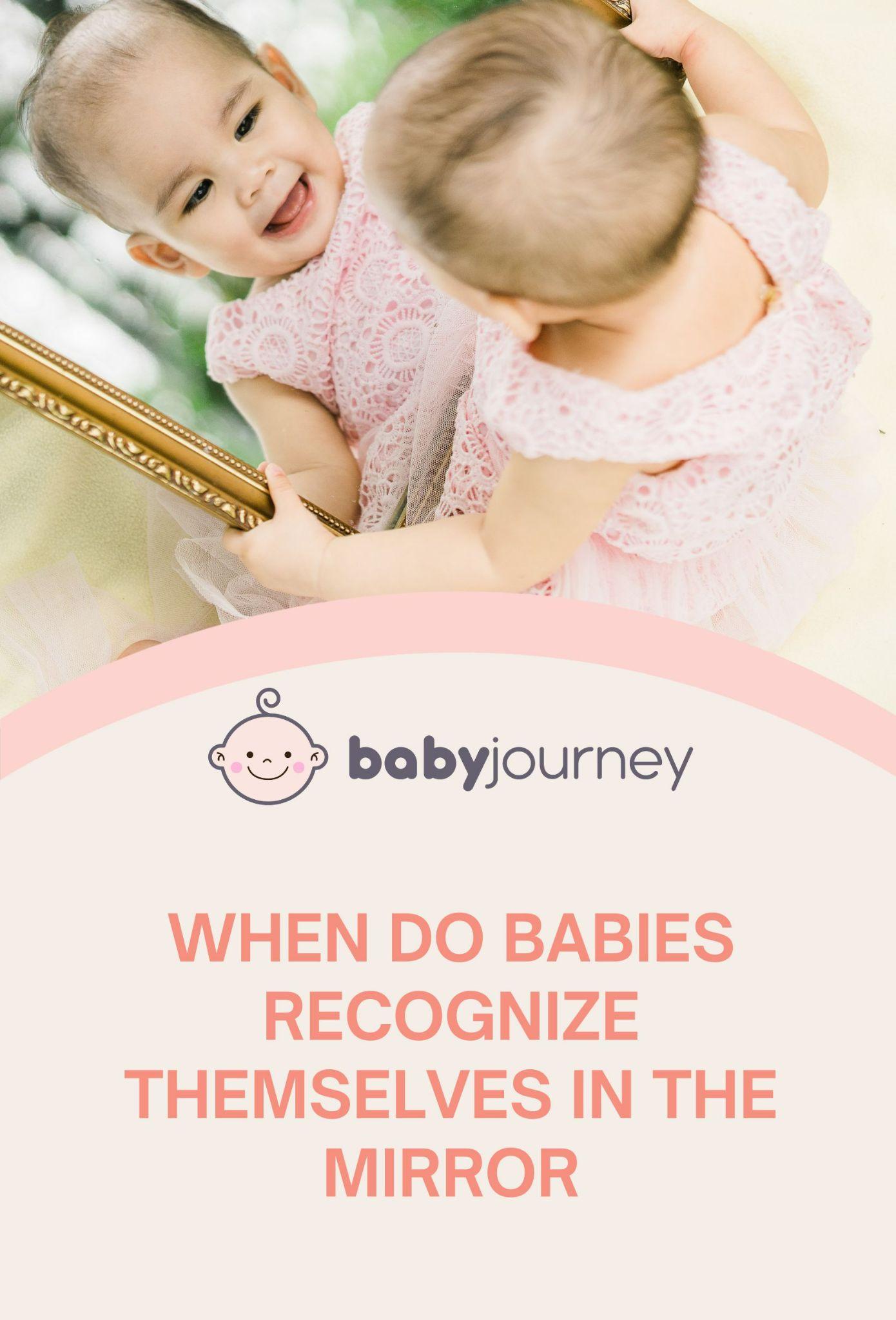

 PARENTING TIPS
PARENTING TIPS







 PREGNANCY
PREGNANCY

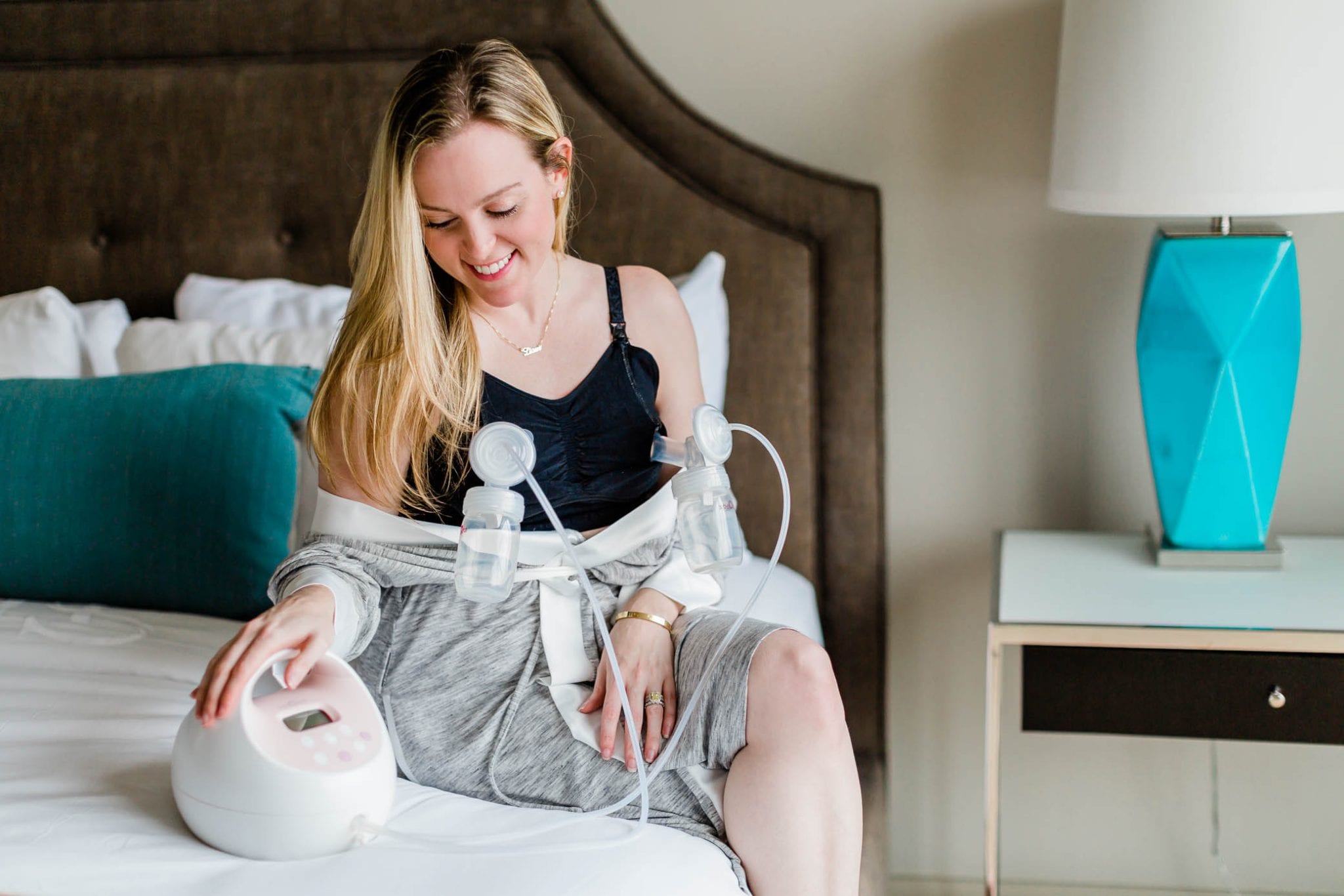




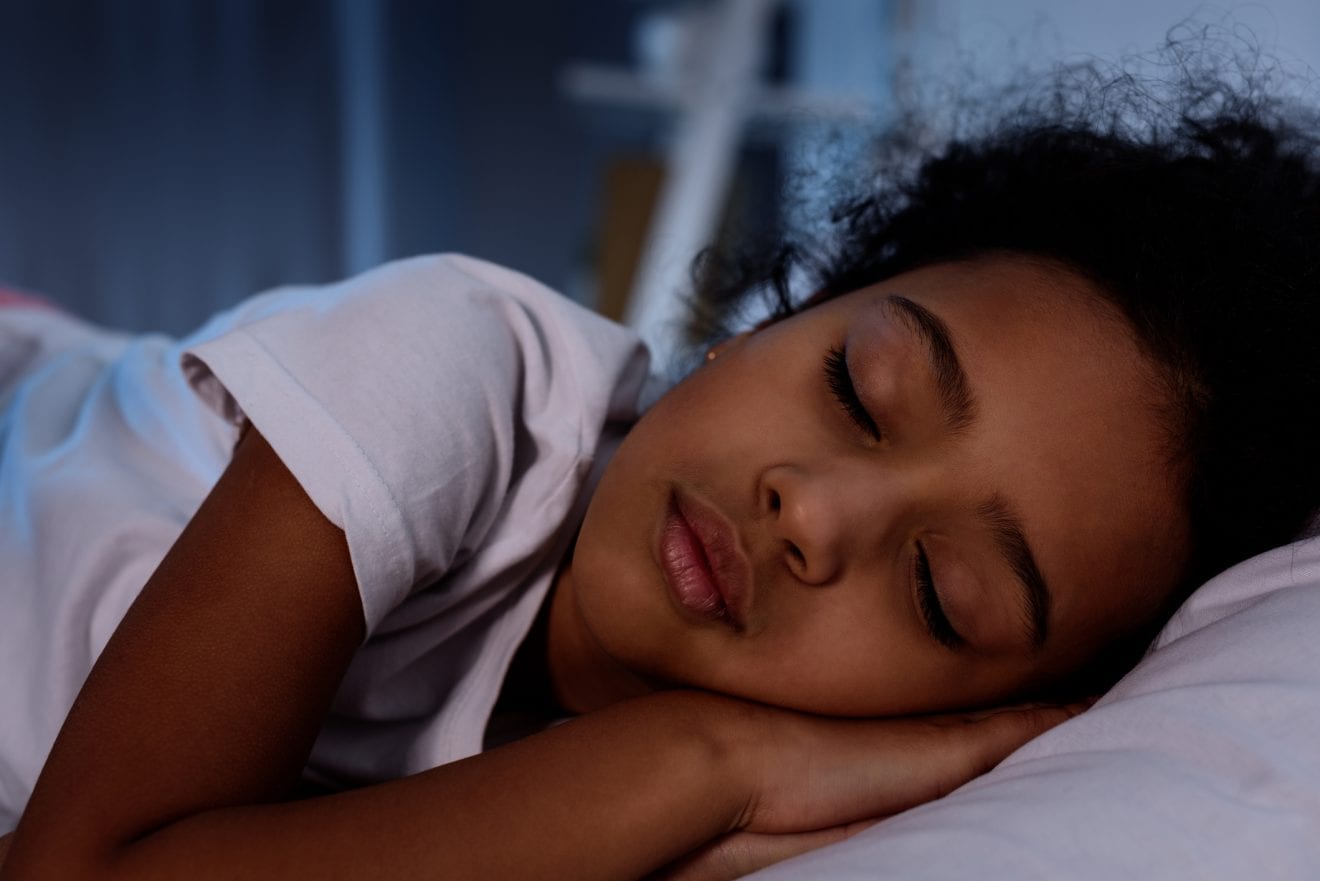
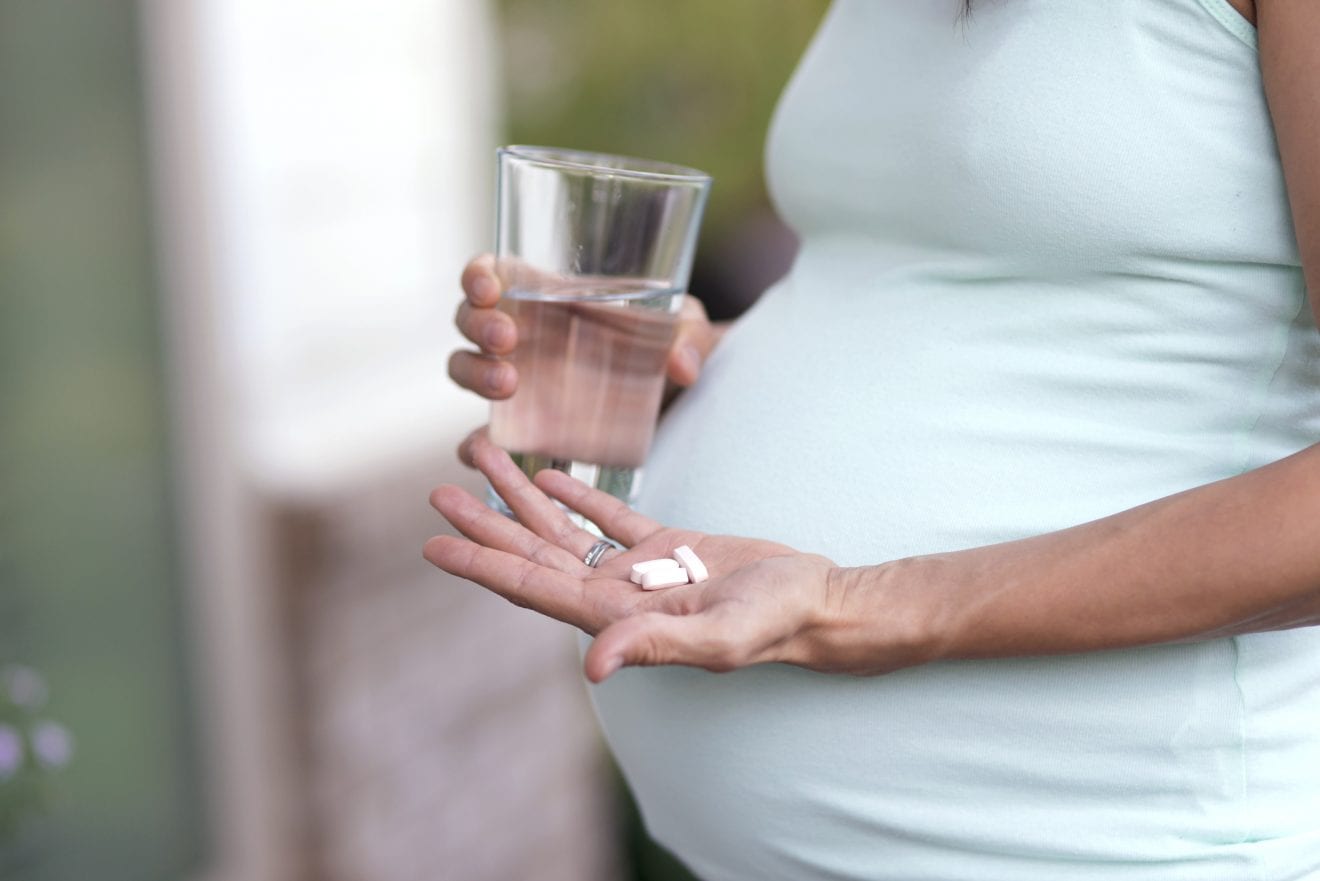
 BABY CARE
BABY CARE








 TODDLERS
TODDLERS








 TEENS
TEENS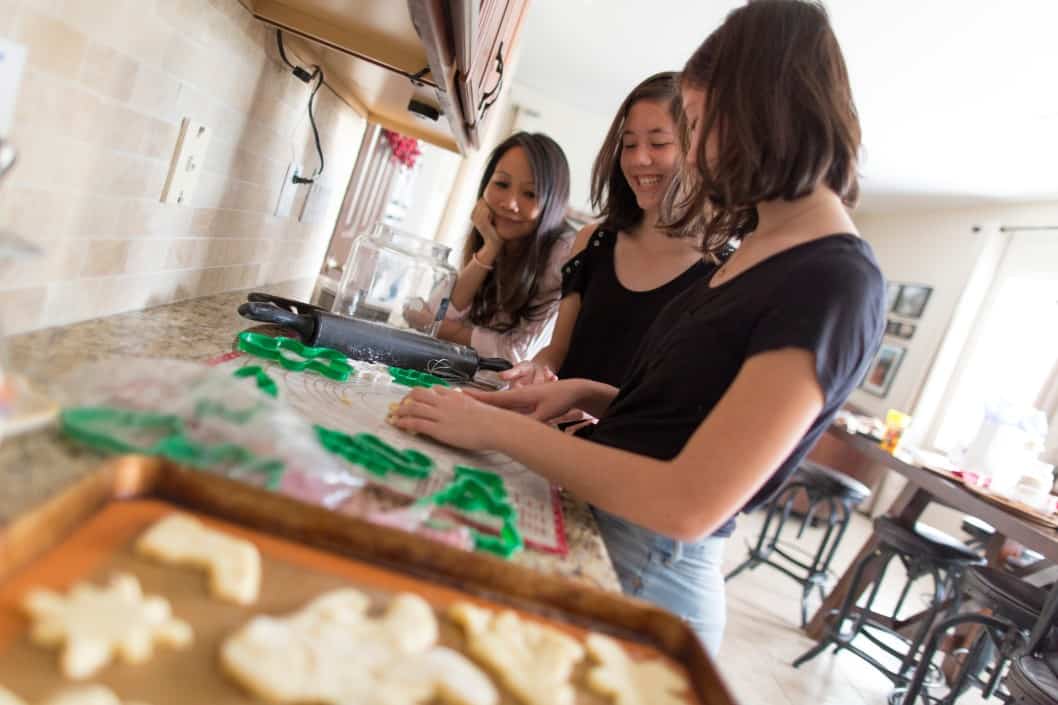
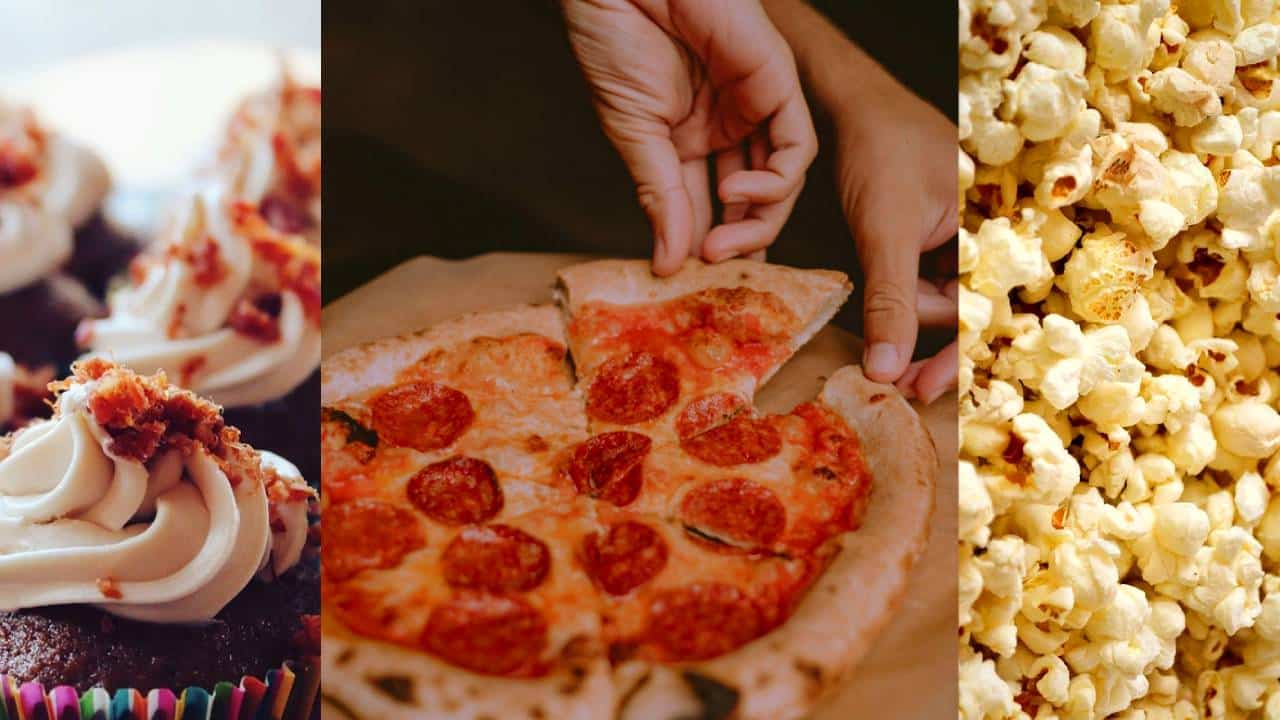
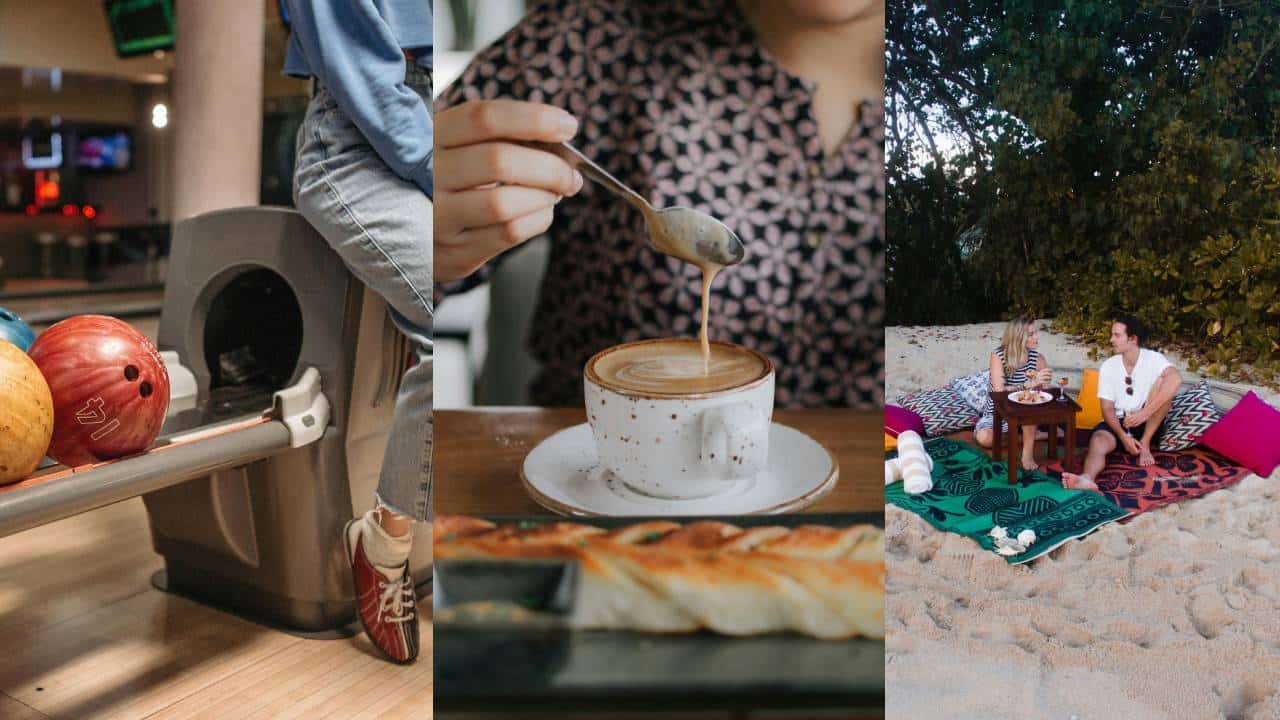
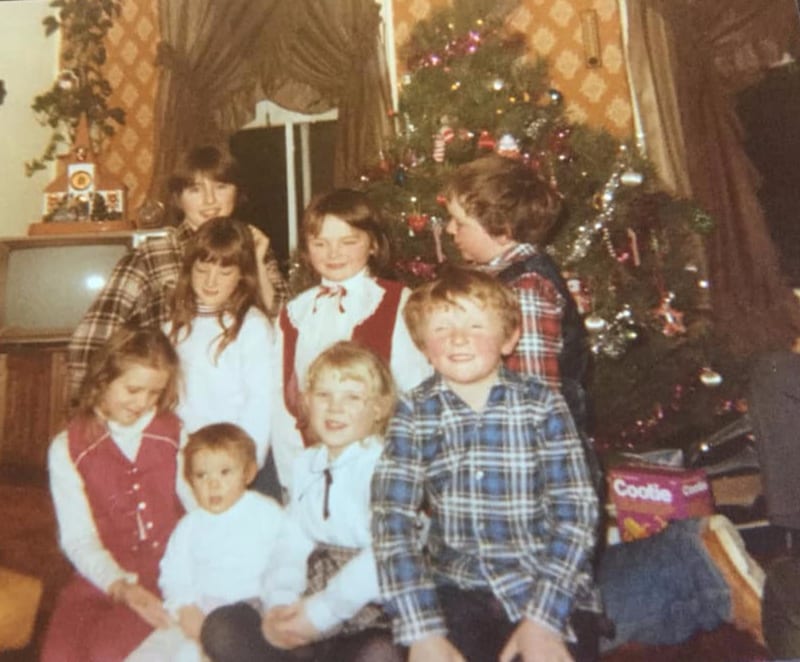





 HEALTH CARE
HEALTH CARE

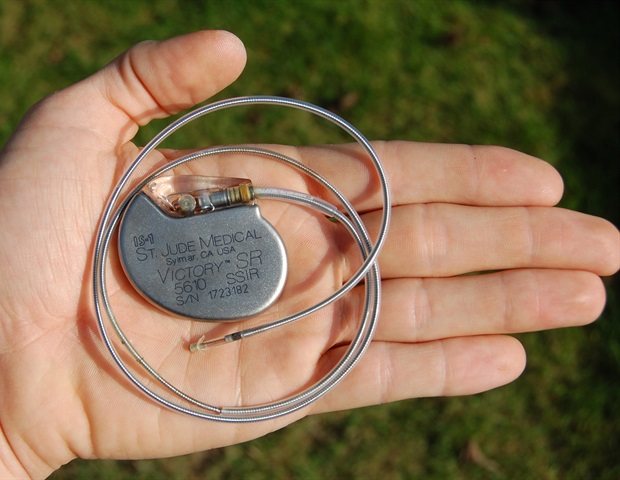





 ACTIVITIES & CRAFTS
ACTIVITIES & CRAFTS








 CONTACT
CONTACT ABOUT
ABOUT


